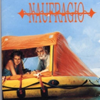SIBONEY LEAVES THE SOUTH CHINA SEA
MANILA TO PANAMA
When General Electric issued orders transferring me from Manila in the Philippines to Caracas, Venezuela in early 1969, it was overly obvious that my 39 foot Robert Clark cutter, Siboney, had to stay behind. My wife and I had to move pack and prepare to move two huge containers of furniture, a nanny, 5 children, a dog and a cat across half a world.
It was insane to add a 39-foot sailboat to the list though Siboney was part of our family history Together with my wife and three eldest children; we had survived a major hurricane in 1967 aboard. It had etched a permanent niche into our family bond. But, on the other hand, it made no sense to spend a huge amount of money to ship an old across half a world, with an unknown number of transfer points since there was no single ship that sailed from Manila to Venezuela. And the cost to ship would be more than $8000, more than I had paid for it.
I put a For Sale ad in the local paper and waited two weeks. I got not one bite, for sure because I had set the selling price way above the market. I was caught in one hell of a quandary. Logic clearly pointed to get rid of the boat. Yet, I was in love and couldn’t bear to part with it.
At one of our weekly Cuban Friday luncheons at the Swiss Inn, as I tried to bury my enigma in rum and cokes, one of my buddies, Leandro Vazquez piped up with seamless logic. He said, “Gee whiz Bill, you sell that boat, then what do you with the money? Buy shoes for the kids and drapes for the house. In a short time you will spend the money. Then you will have neither boat nor money. Let me talk to my friends, see what I can do about shipping it.”
Days later Leandro called, “I spoke to Amadin. He has a ship sailing from Nasugbu to New Jersey in March with 25,000 tons of sugar. He will take your boat to New Jersey for free!” All I had to was to sign an indemnity waiver and get it to the ship on time. It was an offer I could not refuse.
My family and I flew to Venezuela in early February. On April 3, 1969 my Manila racing crew together with my friend and master carpenter, Pacifico Cadion, had Siboney towed from Manila to Nasugbu by the African Queen, the MYC 36 foot committee boat, brought her alongside the M.S. Talisay. There the crew worked Siboney’s cradle from the deck of the African Queen into the water and in place under Siboney. Cadion dove in to insure it was properly positioned. The ship’s crane slipped the mast off the boat and laid it on the deck, then hooked onto the stout steel slings connected to the cradle to hoist Siboney out of the South China Sea and into the ship’s #2 hold. Stevedores had shoveled a cozy pit in the bulk sugar into which the cradle fit snugly. The M.S. Talisay sailed for the Panama Canal on April 5.
M.S. Talisay, a modern bulk carrier, was capable of an average speed of 17 knots. Estimated time to Balboa in Panama was three weeks. We had the choice of either taking the boat in New Jersey, where it was headed, or during the 5 hours they stopped to bunker in Cristobal, on the Caribbean end of the Canal. With Venezuela our destination, we opted for Panama.
When May 1 came and went with no news of an ETA I got itchy. Five more days passed with not a word. Where could they be? Then I was advised the ship would transit the Canal on May 7 at 5:30 a.m. Jim and I flew to Panama and into the dilapidated one hundred year old George Washington Hotel in Colon. At 6 a.m. May 7, the M.S. Talisay emerged out of the early morning fog to slip easily into Pier #9.
Once the gangplank dropped, Jim and I climbed up to the deck, inquired for the captain whom we found at the breakfast table, visibly happy that we had arrived to claim the cargo in #2 hold. While Jim and I joined Captain Espia at breakfast, the hold doors opened, the crane hooked onto Siboney’s cradle and lifted her over the side at which point I asked them to stop until I checked the seacocks. I hopped on board, opened the hatch and dropped below. And almost died. Gasping for breath I crawled up on deck. The sugar had consumed all the oxygen inside the cabin!
After the proper adieus, Jim and I boarded Siboney as a small Panama Canal company tug tossed us a line and towed Siboney and our cradle to the Cristobal Yacht Club where we proceeded to step the mast, secure all rigging and prepare her for her next sea voyage.
William Butler 2004.


